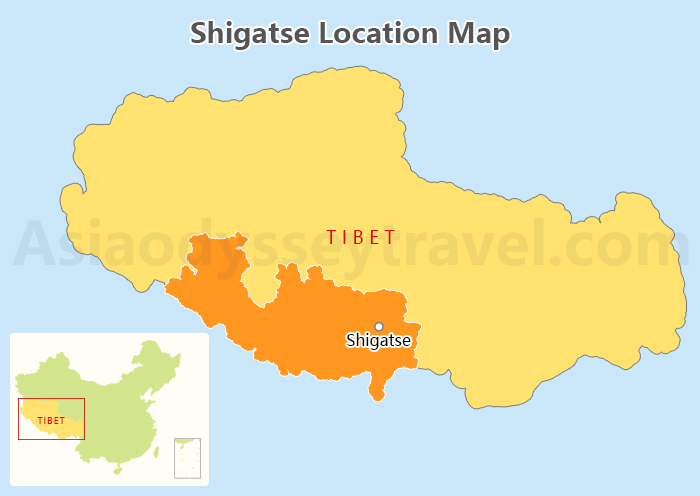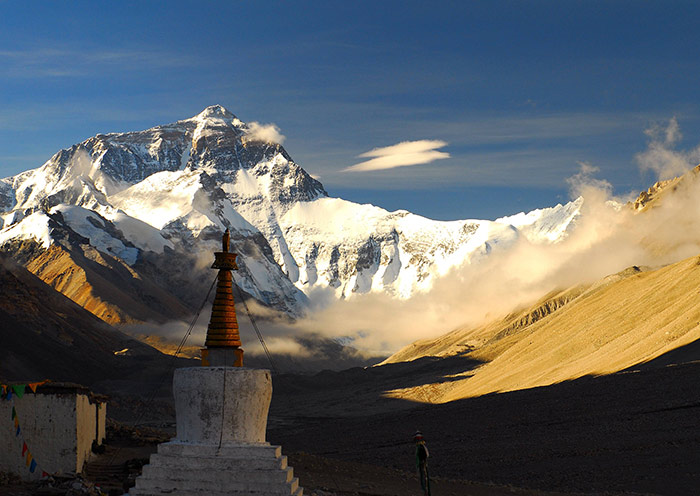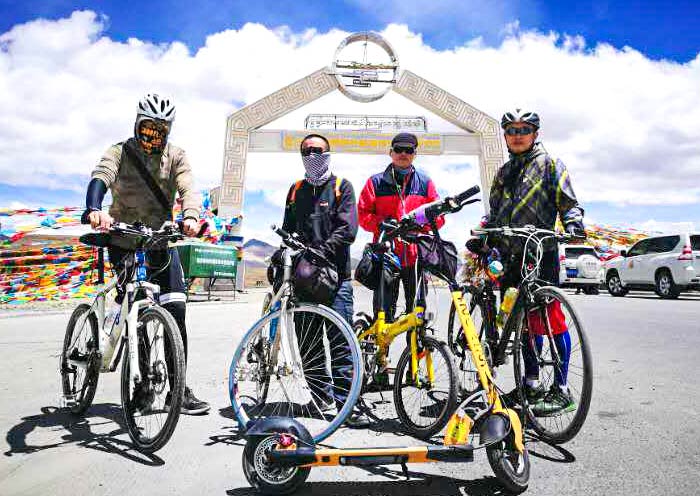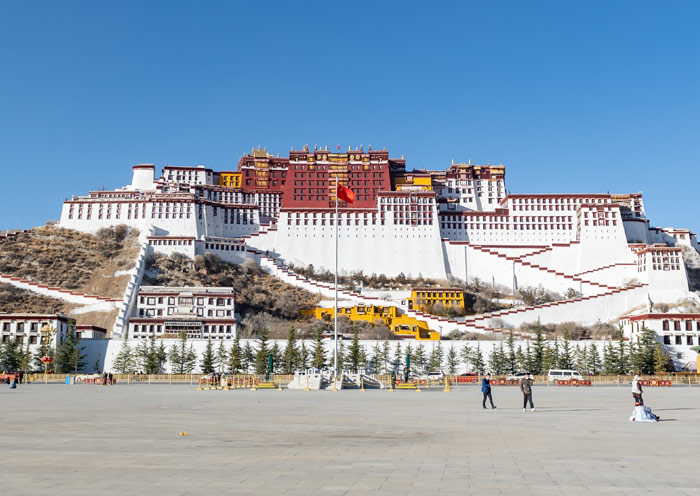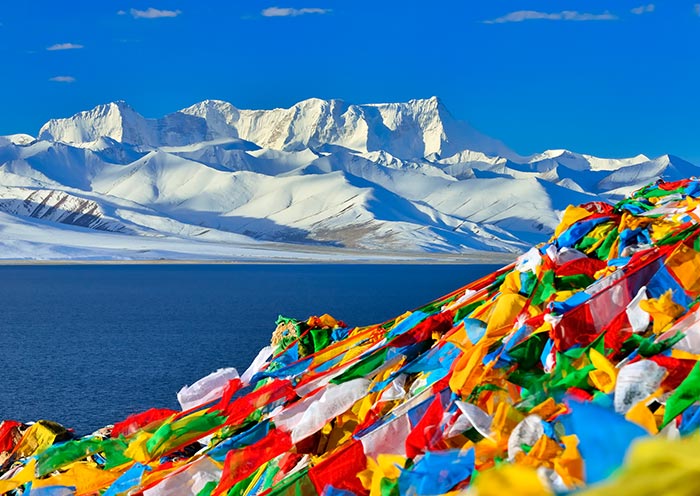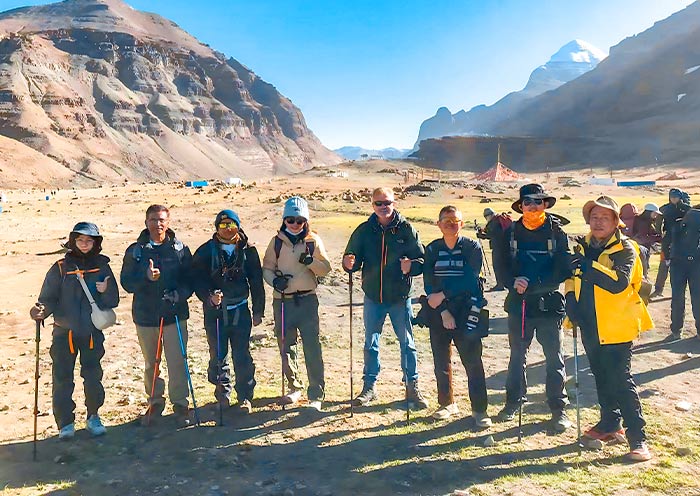Tibet Tashilhunpo Monastery Facts
Chinese Name: Zha Shi Lun Bu Si (扎什伦布寺)
Type: Monastery, Buddhism, Architectural Buildings, Religious Sites
Altitude: 4000 meters
Best Seasons: April to October
Open Hours: 09:00-17:00 (the Buddha halls closed during 12:00 to 14:00)
Recommended Visiting Time: about 2-3 hours
Popular Activities: Self-driving travel, photography, sightseeing
Tickets: CNY 55 for travel low season and 100 CNY for peak season
Address: Songzizhu District, Shigatse, Tibet
Tashilhunpo Monastery Photos
Step into the spiritual and architectural grandeur of one of Tibet's most iconic monasteries - Tashilhunpo Monastery, which is a treasure trove of Buddhist art, history, and culture. Through these captivating images, explore its intricate murals, towering statues, and serene courtyards that have stood as a beacon of faith for centuries.
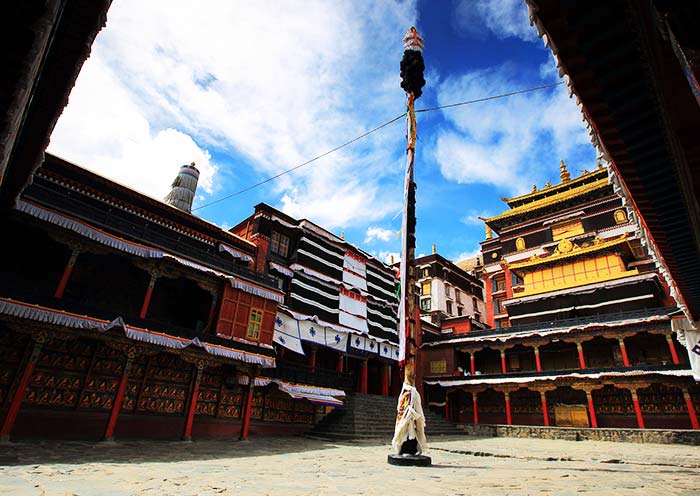

Why Visit Tashilhunpo Monastery in Shigatse, Tibet
Are you looking to immerse yourself in the marvels of Tibetan culture and spirituality? Then a visit to Tashilhunpo Monastery in Shigatse is an absolute must. As a National Important Cultural Protection Site and a National 5A Scenic Spot, this stunning monastery is a true masterpiece of traditional Tibetan and Buddhist architecture. Its unique blend of styles creates a visually breathtaking building that will take your breath away.
As one of the Six Large Monasteries of the Gelupa sect of Tibetan Buddhism, Tashilhunpo Monastery is a place of great significance for those interested in Buddhism and its development throughout history. Located in Shigatse, it is a must-visit destination on Lhasa Mount Everest tour, offering travelers the chance to explore the region's unique high altitude scenery and cultural heritages. Other famous attractions, such as the awe-inspiring Potala Palace, the crystal-clear Yamdrok Lake, and the majestic Mount Everest, are also within easy reach. So don't miss out on the chance to immerse yourself in the wonders of Tibetan culture and spirituality at Tashilhunpo Monastery.
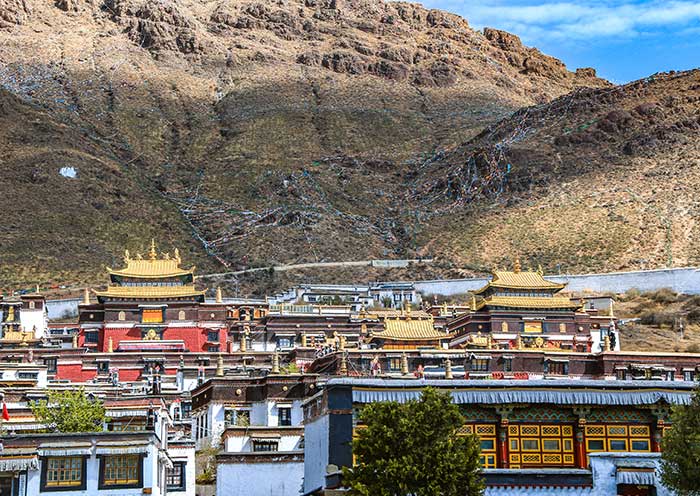
What You Can See in Tashilhunpo Monastery
Travelers to Tashilhunpo Monastery are immediately struck by the grandeur of its buildings, with their golden roofs and white walls. These structures beautifully combine traditional Tibetan architecture with Buddhism, showcasing religious features to the world. The monastery is built into the hillside, surrounded by palace walls that, along with its solemn temple, form the sacred heart of Tashilhunpo Monastery. The main body and followers of the monastery are arranged in an orderly, symmetrical manner, reflecting a sense of harmony.
The sprawling complex covers an area of nearly 300,000 square meters and comprises numerous temples, stupas, and residences for monks. The monastery is renowned for its stunning architecture, intricate murals, and sacred statues, including a nearly 27-meter (88-foot) high statue of Maitreya Buddha, adorned with gold, pearls, and precious stones. Key buildings at the monastery include the Main Assembly Hall, Jamba Chyenmu - The Maitreya Temple, Gudong - The Panchen Lama's Palace, and Stupa Hall.

Main Assembly Hall (大经殿)
The Main Assembly Hall is the oldest building in Tashilhunpo Monastery and served as the place for monks to meditate and chant. Inside the hall, thousands of holes have been dug out and dedicated to Buddha, the King of Heaven, Arhat, various flying goddesses, and Buddha statues. The center of the hall features the throne of the Panchen Lama, which has been in place for hundreds of years. It's worth mentioning that, in addition to the remarkable statues, there is a special hall in Tashilhunpo Monastery dedicated to gifts from emperors, including various Buddhist artifacts, scriptures, oracles, official seals, and jewels and jades.
Jamba Chyenmu - The Maitreya Temple (强巴佛殿)
Jamba Chyenmu is located on the west side of Tashilhunpo Monastery and is famous for its large bronze statue of Jamba Chyenmu, which stands nearly 30 meters tall. Jamba Chyenmu is the Buddha who controls the future, life, and death, making the temple and the statue of great importance in Tibetan culture.
Gudong: The Panchen Lama’s Palace and Stupa Halls (曲康夏)
It served as the living quarters for the fourth Panchen Lama, who oversaw the construction of Tashilhunpo Monastery. The palace includes a narrow courtyard that leads to a temple within the tomb of the Fourth Panchen Lama. Due to his contributions to the monastery, his tomb is one of the most opulent, even when compared to those at the Potala Palace. The stupa measures 11 meters in height and is decorated with gold, silver, and jewels. The light of the butter lamps on these treasures illuminates the entire hall, creating a stunning display.
Best Things to Experience at Tashilhunpo Monastery
Visit Thangka Exhibit Platform
A visit to the Thangka Exhibit Platform is a major highlight of Tashilhunpo Monastery and sets it apart from other major monasteries in Tibet. The platform was built by the first Dalai Lama, Gen Dunzhupa, to commemorate the birth, Buddhahood, and Nirvana of Shakyamuni. It is located in the northeast of Tashilhunpo Monastery and was later extended by the fourth Panchen Lobsang Quji in 1468.
Every year, three days before and after May 15 on the Tibetan calendar, a grand Buddha exhibition is held at Tashilhunpo Monastery. Three large-scale Buddha statues, representing the past Buddha (Buddha of Immeasurable Light), the present Buddha (Shakyamuni Buddha), and the future Buddha (Qiangpa Buddha), are displayed. Monks and believers come to worship, offer their Hada, and kowtow to the Buddha, hoping to dispel disasters and bring good fortune to the world.

Take Part in Tashilhunpo Kora
The Tashilhunpo Kora is another notable feature of Tashilhunpo Monastery. For centuries, people have walked along the few-kilometer-long lane that runs along the outer wall of the monastery. Whether it is sunrise or sunset, there are always people walking quietly on the Kora. The Thangka Exhibit Platform is located at the highest point of the Tashilhunpo Kora, offering visitors the best bird's-eye view of Shigatse.

Surrounding Scenic Areas of Tashilhunpo Monastery
Rongbuk Monastery & Everest Base Camp
Tips: Take breaks at each location along the way to the camp to avoid altitude sickness, wear proper woolen clothes, apply enough sunscreen and moisturizer to prevent chapping, and keep all types of medicine with you.
Everest Base Camp refers to the living zone set up to observe the environment of the core area of Mount Everest. There are two camps in China: the Xipo and Dongpo Base Camps. The Xipo Base Camp is located in Zhaxizong Township, Dingri County, Shigatse Prefecture, Tibet Autonomous Region, while the Dongpo Base Camp is located in the Gama Valley, Qudang Township, Dingri County, with an altitude of 5200 meters and a straight-line distance of about 19 kilometers from the top of Mount Everest. The Base Camp provides accommodation for tourists, with toilets and tent post offices. It is an important starting point and rear base for mountaineering, with mountaineers from all over the world gathering here every year.
Rongbuk Monastery is located 8 kilometers north of Everest Base Camp in Tibet and is considered the highest monastery in the world. Looking south from here provides the best view and photo opportunities of Mount Everest.

Yamdrok Lake
Yamdrok Lake is listed as the three holy lakes of Tibet in parallel with Namtso and Manasarovar. It is a unique natural scenic spot integrating plateau lakes, snow mountains, islands, pastures, hot springs, wildlife, temples and other landscapes. The lake water is always blue, but the blue is not the same. It will change with the change of the illumination light, resulting in different lake colors, light blue, dark blue, peacock blue etc. Despite the picture picturesque scenery, Yamdrok Lake is also the heaven of animals. According to the observation and calculation of the local forestry department, the number of birds in Yamdrok Lake are rare in the country and there are very rich species of wild animals inhabiting in Yamdrok Lake.
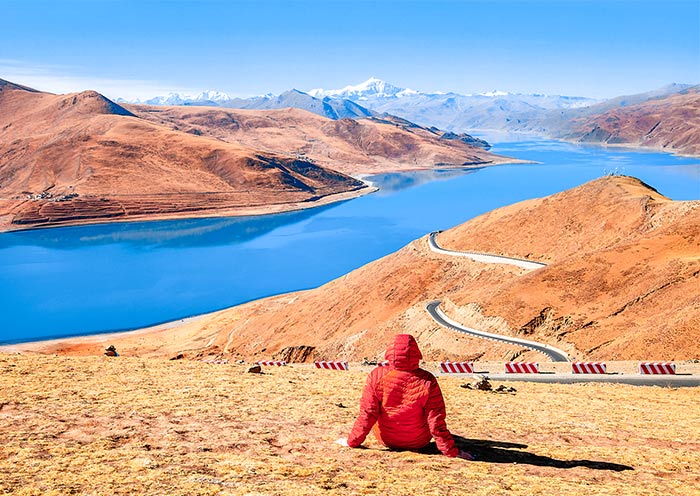
Best Time to Visit Tashilhunpo Monastery
The Tibetan plateau is often referred to as the "roof of the world" due to its average altitude of over 4000m. As a result of the high altitude, temperatures in Tibet are typically lower than those in other cities in China. The best time to visit Tibet is from April to October each year when the weather conditions are favorable and the scenery is delightful. During this time, the average temperature is above 10°C and the oxygen content is comparatively higher than in other seasons. It is also the peak tourist season in Tibet. July and August are typically the rainy season, while May and September generally receive less rainfall.
How to Get to Shigatse Tashilhunpo Monastery from Lhasa
Tashilhunpo Monastery is one of the top recommended stops for a trip to Tibet. Due to the high altitude and vastness of Tibet, it's better for visitors to travel with a group that includes a visit to Tashilhunpo Monastery. Visitors can choose to travel to Tibet by airplane, train, or self-driving. To have a relaxed and pleasant journey, we recommend a tour of at least 7 days.
By Train
There are total 3 trains from Lhasa to Shigatse, 2 Non-stop trains and 1 need to transferring in Shannan. FYI: Ticket fee calculate in Chinese Yuan. To take a direct train from Lhasa to Shigatse, it needs only about 2 hours.
| Types | Train Number | Start Time | Arrive Time | Duration |
|---|---|---|---|---|
| Non-stop Train | C891 | 8:20 | 10:42 | 2h and 22m |
| Non-stop Train | C883 | 16:15 | 18:39 | 2h and 24m |
| Transferred in Shannan | C881/C882 | 8:00 | 18:39 | 10.5h |
Transfer to Tashilhunpo Monastery
Foreign travelers are not allowed to travel alone in Tibet and must be accompanied by a licensed tour guide or travel agency. Asia Odyssey Travel offers private car services with a licensed tour guide to transfer visitors to Tashilhunpo Monastery and other scenic spots around Lhasa. If you need any service, feel free to contact us.
Contact Us for More Transfer InfoHow to Plan a Shigatse Trip with Classic Tibet Tour?
Lhasa - Yamdrok - Karora Glacier - Gyantse Kumbum - Shigatse
If you want a trip from Lhasa to Mount Everest, you can enjoy our 8 Days Tibet tour with EBC. As you journey out of Lhasa, the highway runs alongside a winding river, which alternates between narrow and wide stretches, with a vibrant green hue that is sure to soothe your senses. Don't be disheartened by the seemingly unremarkable appearance of the river; it is, in fact, the mighty Brahmaputra River, whose waters have the power to cleanse and rejuvenate.
As you continue on the road, you'll come across a monument dedicated to the Yajiang River valley, a prelude to the first scenic spot of the journey - the Tibetan three sacred lakes, including Yamdrok Lake. After admiring the beauty of Yamdrok Lake, you'll soon arrive at the Karola Glacier, which is renowned for its size but may not evoke a strong emotional response, much like a cup of KFC snow top coffee.
After leaving the glacier, you'll soon reach the end of day one in the enchanting little city of Shigatse, located at an altitude of 4,000 meters above sea level. If all goes smoothly, you'll arrive at Mount Qomolangma National Park, where strict border armed police checks are conducted. From here, it's a three-hour drive on challenging terrain to reach Everest Base Camp, with breathtaking scenery all along the way.
Sample Itinerary for a Classic Tibet Tour
Here's how to add Tashilhunpo Monastery into your Tibet tour:
Day 1 Arrival in Lhasa | Airport Pick-up and Hotel Check-in
Day 2 Lhasa Culture Tour | Lhasa Traditional Handicraft Art Center, Sera Monastery
Day 3 Lhasa City Tour | Potala Palace, Jokhang Temple, Barkhor Street, Tibetan-style Featured Dinner
Day 4 Lhasa - Gyantse - Shigatse | Yamdrok Lake, Karola Glacier
Day 5 Shigatse - Mt. Everest | Gyawu La Pass, Rongbuk Monastery, Mt. Everest Base Camp, EBC Hot Pot Dinner
Day 6 Mt. Everest - Shigatse | Sunrise over Mt. Everest, Gyatso La Pass
Day 7 Shigatse to Lhasa by Train & Vehicle | Tashilunpo Monastery
Day 8 Lhasa Departure | Hotel Check-out and Airport Transfers
Explore Tibet with Asia Odyssey Travel
Local based in Lhasa and Tibet over 10 years, our local team at Asia Odyssey Travel has carefully designed Tibet tours that offer a truly authentic and unforgettable experience. You can choose to travel in the comfort of a private tour with a flexible itinerary, or join a group tour that's budget-friendly without compromising on quality. Whatever your preference, Asia Odyssey Travel has a tour that caters to your needs and desires, ensuring that your journey to Tibet is an unforgettable adventure.





